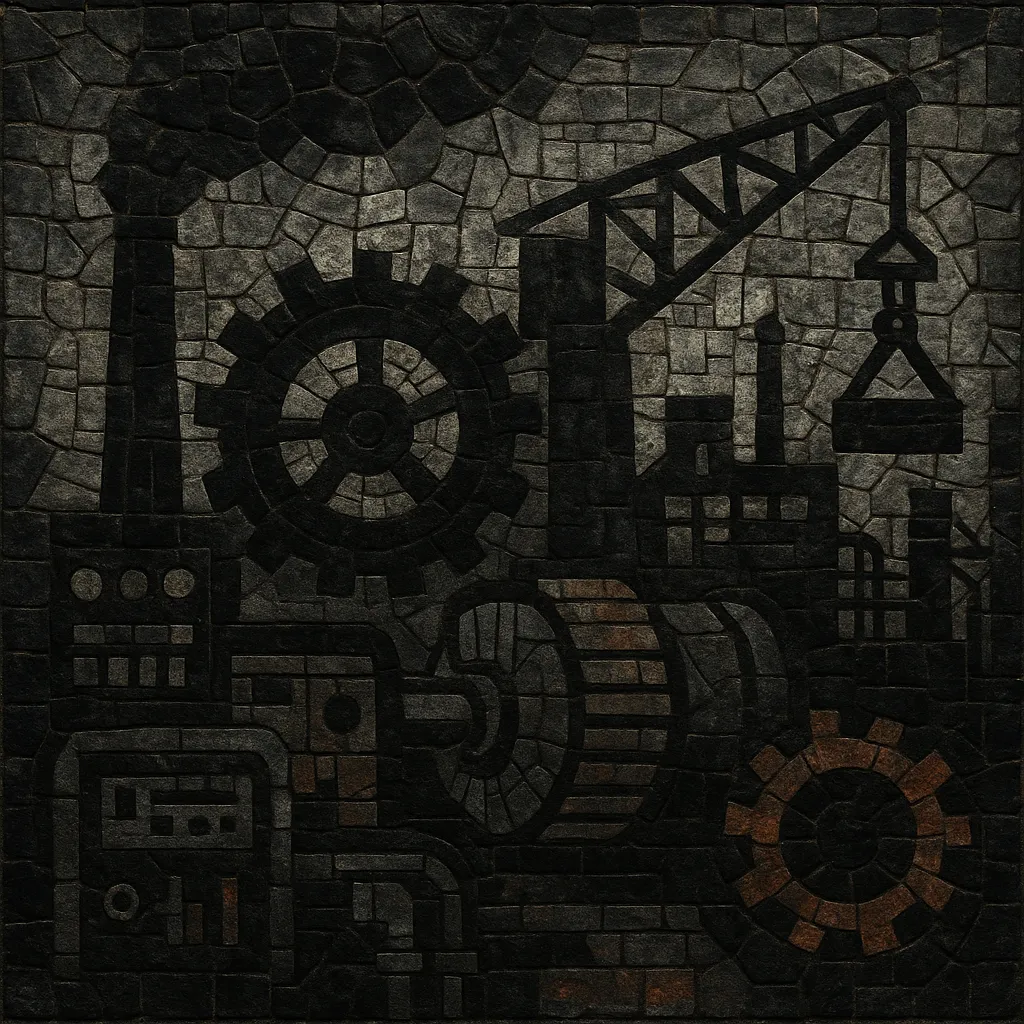Industrial is an experimental electronic music tradition that uses abrasive timbres, mechanical rhythms, and transgressive aesthetics. Its sound palette often includes distorted drum machines, tape loops, metallic percussion, feedback, and found-object recordings alongside synthesizers and samplers.
Emerging from late-1970s UK underground art and performance scenes, industrial foregrounds themes of dehumanization, technology, surveillance, and power. Releases frequently embrace anti-commercial presentation, stark graphic design, and confrontational performance art, treating the studio as a laboratory for sonic manipulation rather than a vehicle for conventional songcraft.
While early industrial emphasized noise, tape processing, and avant-garde collage, later waves fused the style with dancefloor precision (EBM), rock and metal heft, and club-oriented production, giving rise to a broad post-industrial family that remains influential in experimental, electronic, and popular music.
Industrial music coalesced in the United Kingdom in the late 1970s around artists such as Throbbing Gristle and Cabaret Voltaire. The term "industrial music for industrial people" was popularized via Industrial Records, encapsulating a cross-disciplinary approach that merged noise, performance art, and shocking, documentary-like use of media samples. Influences included the European avant-garde, tape and concrete techniques, Krautrock’s machine pulse, and punk’s DIY ethos and hostility toward mainstream culture.
In the 1980s the scene diversified internationally. Einstürzende Neubauten in West Berlin pioneered scrap-metal percussion and spatial, architectural approaches to sound. SPK and Coil extended the genre’s ritualistic and psychological dimensions. Simultaneously, club-facing strands emerged: Electronic Body Music (EBM) in Belgium and beyond (e.g., Front 242) streamlined industrial’s textures into propulsive sequences, while electro-industrial and dark electro sharpened sound design and vocal processing.
Industrial aesthetics entered rock and metal spheres, yielding industrial rock/metal via artists like Ministry, KMFDM, and Nine Inch Nails. These acts introduced heavy guitars, aggressive vocals, and big-budget production while retaining mechanistic rhythms and sample-driven design. Parallel currents explored power electronics and rhythmic noise, emphasizing extreme timbre, distortion, and confrontational themes.
Into the 2000s and beyond, industrial’s DNA permeated techno (industrial techno), broader electronic scenes (witch house, futurepop, aggrotech), and experimental noise. Archival reissues and renewed interest in DIY electronics revived attention to early pioneers, while contemporary producers recombine grit, metallic percussion, and dystopian themes with modern sound design, keeping industrial’s critical, transgressive spirit alive.


